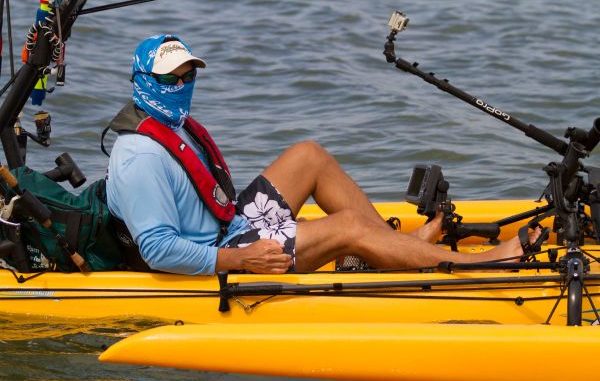
Skin cancer is most-common cancer in the United States
Statistics indicate one in three new cancer diagnosis in the United States comes in the form of skin cancer, making it the most frequently occurring form of cancer.
There are an estimated 2.8 million cases of basal cell carcinoma — only one form of skin cancer — diagnosed annually.
So when it comes to protection from the sun’s ultraviolet rays are you getting the right coverage this summer?
All too often outdoor enthusiasts push the physical envelope of their pursuits and forget that summer solstice means the sun’s rays are perpendicular to the earth’s northern hemisphere at the highest point.
In short, high levels of UV radiation can be hazardous to your health. But with so many products on the market today you almost have to be a PhD in derma-acronymology.
OK, so I made that degree up, but with so many acronyms associated with various skin-protection products there’s no shame in being confused.
Essentially, most sunscreens today contain both ultraviolet A (UVA) and ultraviolet B (UVB) protective chemicals, but numerically range from sun protection factor (SPF) of 10 all the way up to 50.
With such wide-ranging numbers why not simply pay the extra and get the highest?
All humans and mammals carry in various degrees or levels skin and hair pigmentation known as melanin. In other words some people are fair-complexioned and some are dark.
So a sunscreen with an SPF of 50 might not be necessary for darker-complexioned people — SPF 15 might be sufficient.
Dr. Robert Blereau said proper SPF application can be measured by how long it takes an individual to sunburn.
“If you have an area of skin with no protection from the sun, you can gauge how many minutes it takes to burn or get a pink coloration,” Blereau said.
Although most of the cancers he has treated were benign forms of basal cell carcinomas, Blereau continued said it’s important to choose the correct sunscreen for your skin type.
“The SPF for sunscreens is based on how many more minutes it takes to burn when the sunscreen is applied,” he explained. “With proper application, when an individual uses a product rated as SPF 15 it will, generally speaking, take them 15 times longer to get the pink coloration of sunburn compared to not having anything on the skin. This is in the neighborhood of 93 percent protection.
“SPF 30s and 50s are said to have 97 and 98 percent protection or effectiveness, so there is not a whole lot of difference — an SPF of 15 to 30 is probably adequate for most people.”
According to Blereau, the most-common mistake he sees is not putting enough sunscreen agents on exposed skin.
Most sunscreen manufacturers claim individuals use 25 to 50 percent less than the required amount needed for protection from UV rays. The Skin Cancer Foundation suggests that, as a rule of thumb, 1 ounce — the equivalent of the amount that can be placed in a shot glass — initially should be applied to exposed skin during an outing at the beach.
Protective clothing should include hats, long-sleeve shirts, neck gaiters and lightweight pants. Sportswear is now made with the objective of achieving the highest ultraviolet protection factor. A garment with a UPF of 50 allows 1/50 of the UV radiation falling on the surface of the garment to pass through.
“Whether you work or play outside, you want to do all you can to protect yourself from UV rays and prevent the possibility of skin cancers developing, Blereau said. “Using sunscreens, sunglasses and sunscreen-type clothing are ways you can protect yourself.
“That and a big wide brim hat.”
Tips
• Sunscreen should not be applied to children under the age of 6 months because the chemical agents are too harsh for tender skin.
• The worst time to be out in direct sunlight is between 10 a.m. and 4 p.m.
• Sunscreens should be applied 15 to 30 minutes before outdoor activities.
• The most-common mistake leading to sunburns is not applying sufficient amounts of sunscreen.
• Regular reapplication of sunscreen is recommended during a day in the sun.


